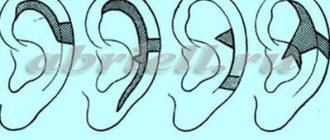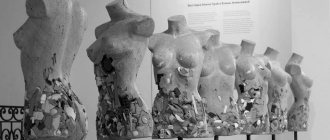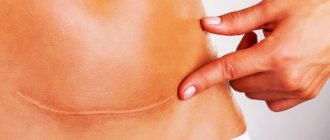The success of plastic surgery depends on many factors. We are accustomed to putting the skill and experience of the surgeon first. However, the experience of the surgeon shows that the results of even the most brilliantly performed operation may be short-lived due to neglect of recommendations for restorative treatment.
Rehabilitation is necessary after any surgical intervention. Swelling, hemorrhages, pain, discomfort, and sometimes loss of sensitivity are inevitable attributes of more or less complex plastic surgery. However, it should be remembered that any of these consequences can be reduced.
If you decide to undergo plastic surgery, you must understand that you have taken only the first step towards perfection. You should not think that a well-performed operation will save you from the need to visit a cosmetologist. To maintain the achieved results for many years, you will need to carefully monitor your skin as before the operation.
The duration of the rehabilitation period depends on the complexity of the operation. The more complex and traumatic the operation, the longer the rehabilitation period. Rehabilitation after plastic surgery usually includes a set of measures aimed at reducing swelling, eliminating hemorrhages, increasing muscle tone, improving the quality of the skin, as well as shortening the rehabilitation period itself.
During any operation, the area of intervention, as well as the body as a whole, undergoes stress. Due to the intersection of many vessels, the blood supply in the operation area changes significantly. And although new capillaries open to replace the crossed ones, their permeability increases, swelling appears, and inflammation develops. Blood pouring out from damaged capillaries and small vessels saturates the tissues. Due to the breakdown of hemoglobin, the skin at the site of injury changes color and bruises appear. Adequate innervation of damaged tissues suffers, and the intensity of metabolic processes decreases. More than once the skin treated with antiseptic preparations becomes dry. Here is just a small fraction of the complex processes that occur in tissues in response to damage.
Rehabilitation programs after plastic surgery should be aimed at improving the health of the body as a whole - its detoxification, improving microcirculation in tissues, increasing the intensity of metabolic processes, moisturizing and lifting the skin. When drawing up a rehabilitation plan, many factors must be taken into account, including the patient’s health and age, the presence of chronic diseases, bad habits and other individual characteristics.
Timing: procedures can be prescribed by rehabilitation doctors or dermatologists-cosmetologists with experience in this field, taking into account the recommendations of the operating surgeon from the second day after the operation.
Frequency of procedures: on the recommendation of a rehabilitation doctor and dermatologist-cosmetologist, procedures can be performed every day or every other day.
Where to carry out: you can choose any convenient clinic for rehabilitation procedures. The Medsi clinic, where Dr. Kushchenko performs operations, has all the necessary equipment and preparations to solve various cosmetic problems.
Rehabilitation methods: depend on the type of surgery performed, but the following are most often used.
Cosmetic mechanics (Lift 6)
The Lift 6 device uses a method of influence called cosmetic mechanics. The principle of action is a mechanical pinching effect on the skin of the face and subcutaneous fat. The technique of tissue stimulation using the Lift 6 device is based on the technology of manual massage using the Jacquet method and is aimed at improving the condition of the skin of the face and chest. The most important difference between this technology is that Lift 6 triggers regeneration mechanisms without using aggressive and painful effects. In the course of rehabilitation procedures after plastic surgery, it is used to reduce swelling, quickly resolve bruises and reduce pain.
Contraindications: inflammatory skin processes, acne in the inflammatory phase, damage to the integrity of the skin.
Is it possible to perform implantation without bone grafting?
The only alternative to bone grafting (excluding prosthetic methods without the use of implants, i.e. removable and bridge prostheses) is a one-stage implantation protocol with immediate loading. However, without a bone augmentation procedure, it is used only for multiple restorations, since in order to fully support the prosthesis in conditions of bone tissue atrophy, it is necessary to install at least three implants both for a segment of teeth and for prosthetics of a full row.
Read more about methods of dental implantation in 1 day WITHOUT bone grafting >>>
Pressotherapy using the Pressoprogram device
The technique is aimed at combining physiological tissue drainage and massage. This effect helps normalize lymphatic drainage and blood circulation, get rid of swelling, increase skin elasticity and improve overall well-being. Huge boots, resembling jackboots, are put on the patient’s feet, and a wide belt is placed on the stomach and hips. The pressotherapy device is equipped with a special computer, with the help of which a specialist selects a treatment program for each specific zone. Compressed air begins to flow into the “clothes”, which provides a delicate but intense massage.
Effect of lymphatic drainage after liposculpture
- Tones the skin and muscles, improving blood and lymph circulation;
- Restores normal metabolism of nutrients in soft tissues;
- Improves the skin's ability to regenerate;
- Fights cellulite;
- Models slender and toned figure contours;
- Relieves swelling and bruising;
- Promotes rapid healing of cannula marks;
- Helps consolidate and improve the results of body contouring surgery.
After body liposculpture, a course of 5-8 procedures or more is recommended so that you can evaluate the result and return to an active life as soon as possible.
Compression underwear
After some surgeries, such as mammoplasty, breast lift, breast reduction, abdominoplasty and liposuction, it is necessary to wear compression garments. This measure helps control the inevitable postoperative swelling, maintains a state of rest in the surgical area, relieves stress on postoperative scars, and also accelerates their maturation and prevents expansion.
Reasons for appearance
Any plastic correction on the face involves tissue injury during the work. The difference lies in the volume of injured tissue - for example, with a circular lift, more incisions are made than with a thread lift. Even safe ultrasonic SMAS lifting destroys and damages tissue in the deep layers.
When tissues are damaged, as a response to traumatic effects, new volumes of interstitial fluid begin to be produced, which promotes healing and restoration of blood vessels, lymphatic channels and other systems at the site of the damaged ones. Visually it looks like swelling. The face is more prone to swelling than other parts of the body, especially in the area around the eyes, since these areas contain the thinnest tissues in which fluid can more easily accumulate.
The area around the eyes is especially prone to puffiness.
Mesotherapy with IAL-system
The timing is a few days before surgery or in the late postoperative period (2.5-3 weeks after surgery).
The biorevitalization technique consists of intradermal injection of low molecular weight hyaluronic acid - the drug IAL-System. Thanks to this procedure, regenerative processes in the skin are stimulated, deep hydration occurs, skin turgor and elasticity are restored, microcirculation is activated, and the skin has an antioxidant effect.
Carrying out the procedure several days before surgery can significantly reduce tissue trauma during surgery and shorten the recovery period after surgery.
Swelling after blepharoplasty - how to remove it
Plastic surgery – blepharoplasty – can rejuvenate the look and remove wrinkles in the eye area. Although this type of plastic surgery is not complex, after it 95% of patients experience swelling. There is no need to worry about this, because this is a normal option.
Swelling after blepharoplasty - causes
Swelling occurs because during surgery the capillaries of the mucous membrane and skin are traumatized. For this reason, fluid from the vascular bed begins to accumulate in the deep layers of the skin, leading to bruising and swelling. Swelling is also caused by a local inflammatory reaction of the body.
What influences the scale of swelling
- Immunity. If the immune system is strong, then recovery is much faster.
— The patient has chronic diseases. Swelling subsides more slowly if there are health pathologies.
— Swelling also depends on the type of blepharoplasty. The smallest swelling usually occurs after laser, transconjunctival blepharoplasty.
- Age. Patients under 45 years of age have a faster healing rate than those over 45 years of age.
How to relieve swelling after blepharoplasty
Following all the doctor’s recommendations helps reduce swelling.
To increase the healing of skin tissue, you will need to stop drinking alcohol and smoking 2 weeks before and after surgery.
In the first two or three days after surgery, it is advisable to sleep on several pillows, as experts say, this can reduce blood stagnation.
Also, in the first couple of days (sometimes 2-4 days), cold compresses should be applied to the affected area.
Be sure to watch your diet. Caffeine, salty and sweet foods retain fluid in the body, so you should avoid them.
Avoid activities that can cause dry eyes, for example, avoid prolonged viewing of TV, gadgets, and computers.
To reduce swelling, use Sinyakoff, Traumeel and others ointments.
Approximately 7 days after surgery, you can begin a course of physiotherapy and massage treatments, but be sure to consult your doctor first.
On average, swelling after blepharoplasty lasts up to two weeks, and if you follow all the surgeon’s recommendations, healing will be quick and easy!
Swelling after blepharoplasty - reviews
She had eyelid surgery and removed hernias under my eyes. At first it was uncomfortable and the swelling was very noticeable. I followed all the doctor’s recommendations during the rehabilitation period, applied special creams, completely excluded salty foods and everything that retained water in the body. And the swelling subsided very quickly. The main thing is to follow all the doctor’s recommendations!
Tatiana K., Moscow
Photo source - Internet
Mesotherapy with JALUPROВВ
Jaluprobb for intradermal injection is a mixture of certain amino acids (glycine, L-proline, L-lysine monohydrochloride, L-leucine). It is usually prescribed 2-4 weeks after surgery for rapid recovery and tissue regeneration. Reduces the rehabilitation period (up to 40%) after surgical interventions, stimulates collagen synthesis and slows down its destruction, optimizes scarring processes, increases thickness and elasticity, reduces skin texture, and provides a pronounced and long-lasting effect.
What else can be done to relieve swelling?
Additional measures can also help reduce swelling after implantation:
- Drug therapy. Take antibacterial, antihistamine, non-steroidal anti-inflammatory drugs prescribed by your doctor.
- Antiseptic baths. The dentist may prescribe rinses with chlorhexidine, chamomile decoction and other means to prevent inflammation and associated tissue swelling.
- Sleep with your upper body elevated. You can use several pillows for this. In this position, conditions are created for the outflow of fluid from the surgical area.
- Elimination of irritating factors. In the first days after installation of the implant, avoid eating hot, salty, spicy foods, coffee, and alcohol-containing drinks.
- Elimination of temperature changes. You cannot take hot baths or steam.
- Reducing overloads. In the first weeks, give up sports training, and also try to avoid stress.
Form, composition
The drug Troxevasin contains troxerutin. It belongs to phlebotonics, venoprotectors.
For ease of use, 2 forms of the medication were created:
- Capsulated (300 mg) - a systemic drug that affects the entire body;
- Gel (2%) - applied topically;
- Troxevasin neo - gel contains not only troxerutin, but also sodium heparin and dexpanthenol.
It is advisable to use the systemic form simultaneously with the gel. This will increase the effectiveness of treatment.
Gel
The gel is a local remedy. It is advisable to use it for varicose veins, venous insufficiency, and retinopathy. The use of a local form is always combined with compression therapy (compression garments and bandages), as well as a systemic drug in capsules.
Patients often ask whether it is possible to apply Troxevasin for ulcers. The gel is not indicated for open ulcerative defects, as infection, local allergic reactions and inflammation are possible. For trophic ulcers, the doctor prescribes systemic antibiotic therapy, as well as a capsulated form of troxerutin.
Troxevasin gel can be used for bruises. The medication accelerates the resorption of hematomas and relieves pain.
Troxevasin gel
Use during pregnancy and lactation
The use of the capsule form during pregnancy in the first 3 months is prohibited. In the 2nd and 3rd trimester, it is allowed to prescribe medication if the benefit to the woman outweighs the possible risks to the embryo. When breastfeeding, taking the capsule form is possible if the danger from the disease for the mother is higher than for the baby.
The gel form of the drug can be used both during breastfeeding and during pregnancy. The drug does not penetrate the systemic bloodstream and does not affect the baby’s body.
During pregnancy, the drug can be used to eliminate severe symptoms of hemorrhoids, venous insufficiency, and ulcerative defects (for varicose veins). Both local and systemic forms are used. The patient is monitored during therapy.
Similar medications
Troxevasin has its own analogues, which are not inferior to it in effectiveness. Similar drugs:
- Phlebodia 600 - the active component is diosmin; the effect of the medicine is similar, it is produced in the same forms;
- Detralex - contains diosmin and flavonoids; Sold as tablets and oral suspension; is not inferior in efficiency;
- Indovazin - contains indomethacin and troxerutin; Available in gel form;
- Lyoton - the drug belongs to the group of anticoagulants; produced only in the form of a gel; does not have a systematic form.
Troxevasin - instructions for use
The use of Troxevasin is possible both for medicinal purposes and for prevention. The drug is required for vein damage. Before using the medication, you should consult a surgeon, phlebologist, or therapist. The doctor will determine the severity of the condition and prescribe the correct therapy. Adequate treatment can prevent serious complications.
How to take Troxevasin capsules
The capsule form must be taken with meals. Troxevasin for swelling of the legs should be taken 2 capsule forms twice a day. The duration of treatment is 3-4 weeks. Then they switch to maintenance therapy at 300 mg per day for another 2 months. Treatment tactics are selected individually by the treating doctor. It is possible to take the medicine at a dosage higher than 600 mg. The use of high doses should be supervised by a doctor.
For hemorrhoids, a capsule form is recommended twice a day (600 mg). Course therapy lasts 14-28 days.
Using the gel
The gel for varicose veins of the legs and venous insufficiency should be used twice a day. The required amount of product is applied to clean skin that is free of scratches and ulcers. The medicine is rubbed in until completely absorbed. In this case, hand movements should be carried out in the direction from the foot to the thigh. After application, you need to lie on your back for 20-30 minutes, placing your feet on a pillow or cushion. This will help relieve the feeling of heaviness in your legs.
Attention! The gel is quickly absorbed and does not leave marks on clothing, so it can be applied under elastic bandages and compression garments.
The duration of therapy is up to 1-3 months. The doctor chooses the treatment tactics. If in the first 5-6 days the symptoms of the disease intensify, you should consult a doctor to adjust the therapy.
For hemorrhoids, it is recommended to apply the gel to the anal area twice a day. The drug is used additionally after each bowel movement. The duration of therapy can be up to 14-28 days.
It is possible to use the drug for scarlet fever, measles, allergies and other conditions accompanied by vascular fragility. The gel is recommended to be used simultaneously with ascorbic acid. This will enhance the effectiveness of therapy.
When swelling is a sign of complications
Despite the fact that the appearance of edema and other symptoms is a physiological phenomenon due to tissue damage, they should not cause unbearable discomfort to the patient. If the symptoms are pronounced and significantly worsen the quality of life in the postoperative period, you need to talk about complications and immediately consult your doctor.
Alarming signs in which you should think about the development of a complication or an abnormal reaction that requires immediate correction:
- High rate of development, rapid increase in size of edema, transition of edema to the soft tissues of the face.
- The swelling is dense, the consistency of an eraser.
- Lack of positive dynamics - does not begin to decrease from the 3rd day after the operation.
- Impaired speech and chewing function due to edema.
Associated factors also indicate the occurrence of a problem.:
- An increase in body temperature above 38 degrees for longer than a day.
- Severe pain at intervals of less than three hours (even when taking painkillers).
- Discharge of a large amount of ichor, bleeding from the wound.
- The addition of a bacterial infection, manifested in suppuration in the wound area.
- Strange odors from the post-operative area.
If one or more of the above symptoms appear, you should immediately contact the dentist who performed the sinus lift or bone grafting. Find him and explain the situation, don’t delay. It is dangerous to self-medicate in such a situation , so entrust the treatment of the emerging complication to an experienced specialist.
If you are undergoing treatment at our Center, immediately contact the 24-hour support service by calling from your card.
Ways to solve the problem
A detailed x-ray examination is carried out on a computed tomograph in macro mode, the doctor determines whether there is inflammation or whether it is just panic from noticeable swelling. After assessing the clinical situation, the doctor will prescribe treatment aimed at eliminating the cause of the swelling.
- In severe cases, repeated surgical intervention may be resorted to (in case of implant rejection, purulent complications).
- In cases where the swelling does not bother the patient too much and gradually decreases during the first 7-10 days, additional medical intervention is not required and this symptom will disappear on its own as the tissue heals.
Patients often come to our Center with complications after unsuccessful operations. We specialize in helping with problems related to maxillary sinus dysfunction. The specialized ENT department is equipped with the necessary equipment to eliminate sinus lift complications.
How long should it take for bruises and swelling to disappear?
If the operation is performed correctly and the patient does not have any unfavorable concomitant diseases (diabetes mellitus, bleeding disorders and vyskulitis, etc.), bruising and swelling after blepharoplasty are minimal and go away quickly. Swelling usually disappears within the first week. How quickly bruises disappear depends on their size and location. It may take 2 to 6 weeks to completely eliminate them. At the same time, makeup products make it easy to hide bruises in the initial stages after eyelid surgery.
Restrictions on use, interaction
Do not use the medicine if you are allergic to its components. The medication is not indicated for children under 15 years of age (gel), 18 years of age (capsules), since it has not been studied in patients under 15 years of age. The capsule form should not be prescribed to patients with lactase deficiency or malabsorption syndrome.
According to the instructions, with the simultaneous use of troxerutin and ascorbic acid, the effectiveness of treatment increases. No data on interactions with other drugs have been identified.
What pathological process can be suspected with persistent swelling?
When performing a sinus lift by an inexperienced doctor, perforation of the maxillary sinus is possible, which is accompanied by characteristic symptoms, including swelling. Consequences of this outcome of the operation:
- inflammation of the maxillary sinus;
- penetration of bone material into the sinus;
- complicated course up to meningitis.
Since some options for bone grafting end with the implantation of an implant, there is a risk of complications associated with its rejection or the development of inflammation around it (peri-implantitis). Both of these pathological processes are associated with a violation of surgical technique and the presence of a focus of infection in the oral cavity. The problem is serious, although extremely rare.
- In the case of peri-implantitis, the inflammation is localized near the dental implant and is accompanied by all the characteristic symptoms - pain, hyperemia, severe swelling.
- Rejection of the implant occurs due to the influence of immune factors on it and depends on the individual characteristics of the patient’s immune system. In some cases, this process develops rapidly, while in other cases, rejection can be suspected by pronounced swelling that does not decrease with time, pain, and deterioration of the patient’s general condition.
If the swelling begins to bother you greatly and other alarming symptoms appear, you should seek qualified help from a doctor. Treatment of pathological processes must be timely and comprehensive .
Pharmacodynamics
With varicose veins, the characteristics of the mucous membrane of the vessel wall are disrupted, which leads to platelet adhesion. Adherent blood cells provoke vasoconstriction, inflammation, and accumulation of blood in the veins located below. Where blood accumulates, the vessels begin to dilate. Symptoms of varicose veins appear (stars, dilated veins are visible through the skin). As the disease progresses, a disturbance in the trophism of the skin appears, which is accompanied by the appearance of ulcers.
The drug Troxevasin prevents platelets from sticking to the mucous membrane of the venous bed. The product strengthens the vein wall, making it less permeable to water. With the use of the product, swelling, pain in the legs, and inflammation go away.











